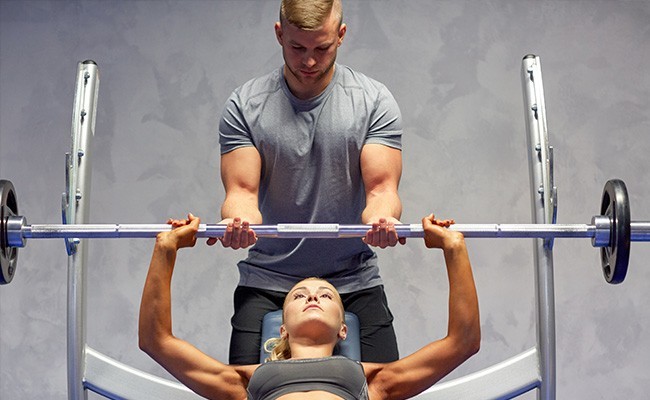
Shoulder injuries during weightlifting II: capsulolabral injuries
- 14/11/2023
What is the capsulolabral complex?
The capsulolabral complex of the shoulder refers to the functional unit formed by the glenoid labrum (a ring of fibrocartilage that deepens the glenoid cavity), the joint capsule, and the glenohumeral ligaments. These structures work together to provide stability to the shoulder joint, which is inherently highly mobile. When this complex is injured, usually due to trauma or repetitive motion, it can cause instability, pain, and functional limitation of the shoulder.
Why is weightlifting so harmful to the capsulolabral complex?
As we discussed in the previous article, weightlifting, or Olympic weightlifting, consists of two events: the snatch and the clean and jerk.
The snatch exercise involves lifting the barbell from the floor to overhead with the arms fully extended in a single movement. The bar is placed horizontally in front of the lifter's legs. With an overhand grip, the bar is raised to hip height. The lifter then squats and extends the arms, fully extending both arms vertically above the head. This exercise is the most technical in weightlifting.
The two-step exercise consists of lifting the bar from the floor to the shoulders with a squat (clean or loaded), then returning to a standing position and initiating the second phase (jerk) by flexing the legs and raising the bar above the shoulders with both arms extended.
These biomechanical stresses under intense loading conditions, in extreme joint positions, and repeatedly, are a perfect substrate for injury.
Chronic Injuries of the Capsulolabral Complex
Chronic injuries of the capsulolabral complex affect any athlete with overhead activity, and weightlifters are included in this group. Various studies have determined that up to 35% of injuries in weightlifters occur in the capsulolabral complex. There is some consensus that chronic and repeated loading of this capsulolabral complex causes capsular tension, hidden instability, and persistent pain.
Lifters' desire to gain strength and muscle hypertrophy (increase in muscle size) in larger muscles often leads them to neglect the muscles responsible for stability and mobility. Proper shoulder function requires a subtle balance between mobility and strength of the different muscle groups that function synchronously during exercises. Training routines biased toward targeting specific muscles can disrupt this balance.
If these biased training routines are combined with repetitive loads and unfavorable positioning, the lifter's risk of labral injuries in the form of capsulolabral junction dysfunction, labral tears, or shoulder instability increases.
Are there variations in exercises to prevent injuries?
Given weightlifters' predisposition to chronic pain and shoulder dysfunction, it is essential to understand the risks of certain exercises and the modifications that can be made to prevent injuries.
Although the relationship between a specific exercise and a specific injury is not well defined in the literature, some authors describe a range of pathologies related to the bench press. The unfavorable position of the rotator cuff, the rapid alternation between concentric and eccentric muscle contraction, and repetitive forces can lead to rotator cuff injuries and posterior labral injuries. Furthermore, bilateral glenohumeral dislocations have been described in the literature with the bench press.
Other authors have proposed additional variations in bench press technique that would protect the shoulder of lifters diagnosed with rotator cuff tendinopathy, acromioclavicular problems, instability, or labral/biceps pathology:
- A narrow grip on the bench press reduces shoulder torsion and minimizes shoulder adduction and extension.
- A higher chest contact point, above the xiphoid process, also reduces shoulder torsion.
In cases of posterior instability, a wider grip and avoiding maximum repetitions as much as possible are beneficial due to posterior capsular and labral tension.
Another exercise frequently performed by weightlifters is the shoulder press. Preventive recommendations for this exercise include avoiding the barbell dropping behind the neck and leaning back 30° while performing the exercise.
How to conservatively treat chronic shoulder injuries in weightlifting?
The basis of treatment for these chronic shoulder problems will be:
- Modification of the training regimen.
- Symptomatic management and physical therapy.
- Avoiding high-risk exercises.
- Strengthening stabilizing muscles.
The implementation of these measures will, in many cases, allow the athlete to avoid surgical treatment.
Book an appointment with Dr. Jordi Jiménez. He will see you at the center of Palma de Mallorca and help you regain your quality of life.

![[VIDEO] Ultrasound-Guided Injection for Trigger Finger](https://drjordijimenez.com/imagen/100/100/Imagenes/infiltracion-ecoguidada-dedo-resorte-drjordijimenez.jpg)
![[VIDEO] Ultrasound-guided infiltration of the lumbar facets](https://drjordijimenez.com/imagen/100/100/imagenes-pagina/sindrome-facetario-lumbar-drjordijimenez (1).jpg)
![[VIDEO] Ultrasound-guided infiltration of the hip joint](https://drjordijimenez.com/imagen/100/100/Imagenes/valgo-dinamico-rodilla-drjordijimenez.jpg)